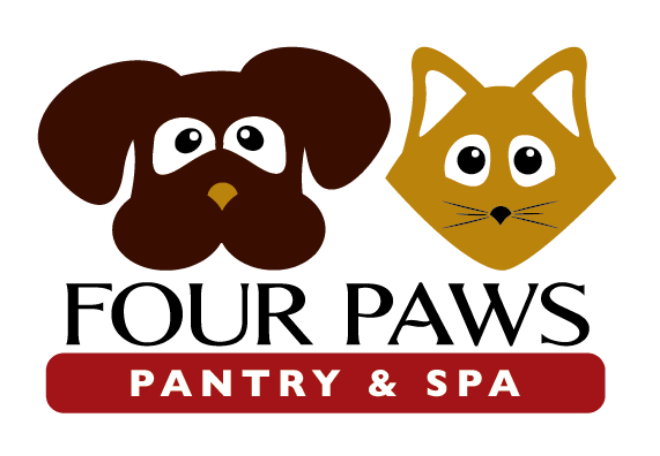By Debra Manfield, Owner
What should seem obvious by now is that I am a huge promoter of raw food diets for dogs and cats. I like to use the term “species appropriate” when discussing raw because it is minimally processed, unlike dry kibble.
Witness our recent pet of the month winner, Blu, racked with bouts of intestinal disorders until his owners switched him to a raw food diet. Now Blu is a fabulously healthy Husky!
Recently I did some research on a malady common among large chested, large breed dogs, referred to as GDV- commonly known as bloat. The research uncovered many things; among them were the benefits of feeding a raw or home prepared diet.
What is bloat?
Bloat is an accumulation of gas that can sometimes cause the stomach to rotate or torque resulting in GDV (gastric dilation and volvulus), i.e. torsion. Bloat, by itself, can last for hours, even days before torsion occurs. Both maladies can be life threatening. A study published in Veterinary Surgery in 1996 reported that 40,000 – 60,000 dogs experienced GDV and of those, 33% died.
What are the signs of bloat?
Excessive drooling, restlessness, panting, unproductive vomiting, pacing, whining, rear checking, bloated (hard) abdomen, and the dog just plain doesn’t seem right.
Let’s put some myths to rest.
“I don’t own a big dog so I don’t have to worry.”
While this painful and deadly disorder mostly targets large breed dogs with deep chests, any dog, large or small, can be affected, including Yorkies, Dachshunds, and other small Terrier breeds.
Dr. Larry Glickman, from Purdue University School of Veterinary Medicine followed 1914 dogs with no prior history of GDV and found that the breed with the highest average lifetime likelihood of bloat is the Great Dane at 42%. Other breeds with a higher than average risk includes Bloodhounds, Irish Wolfhounds, Irish Setters, Akitas, standard Poodles, German Shepherds, and Boxers.
Other risk factors include lean body mass, aging, first degree relatives who have bloated, and eating quickly. Nervous, fearful, and/or aggressive dogs have an increased risk of bloat, and some dogs bloat after a recent kennel stay or long car ride.
“I moisten my dog’s food and elevate the bowl so it’s easier for my dog to digest.”
Dr. Glickman’s study revealed these findings:
- Feeding in an elevated feed bowl surprisingly resulted in a 110% greater risk.
- Dogs fed dry food containing citric acid that were moistened before feeding resulted in a whopping 320% greater risk!
- Dogs fed dry food with fat among the first 4 ingredients resulted in a 170% greater risk.
- Dogs fed one large meal per day had an increased risk of bloat.
Ways to decrease the risk of bloat?
The Purdue study uncovered the following ways to decrease the risk of bloat:
- Feeding table food resulted in a 59% decrease.
- Feeding canned food, a 28% decrease.
- Feeding a dry diet with a rendered meat meal, including bone, as one of the first four ingredients decreased the risk by 53%.
While there is no consensus on the causes of GDV, or how to prevent it, some recommendations can be made:
- Feed multiple small meals.
- Don’t breed a dog with a first degree relative that has bloated.
- Consider gastropexy. Studies have shown that dogs that have bloated and survived will have a 76% chance of bloating again with half of them bloating within 3 months. Dogs undergoing gastropexy (attaching the stomach wall to the body wall) have only a 6% chance of reoccurrence.
- The use of Phazyme can prove helpful in eliminating some of the gas in the abdomen, but some veterinarians warn against its use as it could cause vomiting, which could lead to aspiration.
A holistic approach to prevention considers the imbalance that exists in some bloat prone dogs between the liver and stomach. Remedies are used to correct the underlying imbalance along with probiotics and digestive enzymes.
Helping your pet to be calm will help reduce the risk, as will positive training and aromatherapy.
But the most positive impact towards the prevention of bloat could be a diet change. Switching to real food versus processed dry food, many believe, could greatly reduce the occurrence of bloat. Anecdotally, many holistic vets believe that a raw or home cooked diet can significantly reduce the risk of bloat. Monique Maniet, DVM of Veterinary Holistic Care in Bethesda, Maryland states, “I haven’t seen bloat in more than five years.” She estimates that 75 – 80 % of her clients feed a raw or home cooked diet.
Over the many years I’ve been advocating feeding raw, I’ve witnessed many impressive outcomes from customers’ converting their pets to raw from a kibble diet.
If you are currently feeding raw, congratulations! If you have considered feeding raw, but haven’t attempted it yet, this would be the time. Finally, if you’ve never considered raw, what are you waiting for!
For additional information please consult the following sources:
Purdue University Prospective Study of CGDV (Bloat) Larry Glickman VMD published in Volume 217, No 10 Journal of the American Veterinary Medical Association.
Tufts University School of Veterinary Medicine Jerold S Bell, DVM 2003
